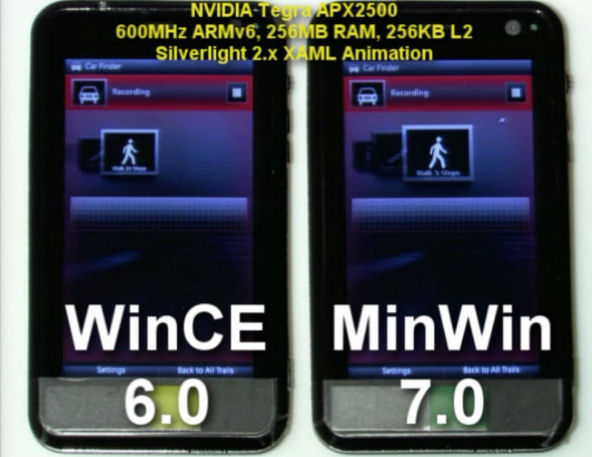Thus Experiment 19 was the genesis of the switch to the Windows common core in Windows Phone 8 and the start on the Windows RT (Windows on ARM) initiative. As the Microsoft project page notes:
Within months of the completion of Experiment 19, Microsoft launched efforts to build what would become Windows Phone 8 and Windows RT for ARM tablets.
What's interesting about this information is it demonstrates the kind of timescales over which modern mobile software platform development takes place. While the actual decision to switch Microsoft mobile phone platform to the Windows NT kernel would come much later it is quite clear than the origins of Windows Phone 8 can be seen in Experiment 19 research taking place in 2008... that's two years before the launch of Windows Phone 7 in October 2010.
The Microsoft Research page notes that the reason "desktop" code performed better on mobile phone hardware than "legacy" systems was that mobile chipsets now provide more advanced capabilities (e.g. multiple cores) so that they have become similar to PCs hardware of "just a few years ago". The Windows NT and CLR code is optimised to exploit this type of hardware, whereas Windows CE was built around constrained mobile hardware and related requirements. This hardware shift has changed the smartphone industry, making life very difficult for the traditional hardware manufacturers who saw arcane hardware integration knowledge as a barrier to entry.
It is possible to see this hardware generation shift as one of the key factors in the decline of older, mobile optimised, operating systems (Windows CE, Symbian, proprietary mobile OSes) and the rise of the second generation mobile platforms (iOS, Android and potentially Windows Phone 8), which to some extent are based on desktop operating systems to a greater or less extent.
Experiment 19 origins
The origins "re-imagining" of the Windows Phone platform is described by Microsoft Research:
In the fall of 2008, our Operating Systems Group was participating in the Menlo project to explore new phone-related experiences. At the time, Windows Phone 7 was in early development using the Windows CE kernel and .NET Compact Framework. We had been experimenting with these “legacy” platform components for over a year. While they performed well, we were frustrated by their lack of compatibility with the Windows NT system and .NET Framework Common Language Runtime (CLR) used on PCs. We realized the time had come for a bold experiment: could we replace CE with NT and replace the Compact Framework with the CLR?
Read the full story here.
A video on the Microsoft Research site shows an early running example of the prototype. It would have been evidence like this that motivated the decision to make the switch for the Windows Phone 8 release.
This video shows a comparison of two identical prototype phones with NVIDIA Tegra APX2500 processors. The phone on the left is running the Windows CE kernel, the same OS kernel used in Windows Phone 7. The phone on the left is running the Windows NT kernel, the same OS kernel used in Windows Phone 8. Dubbed “Experiment 19”, the prototype system on the right proved that the Windows NT system could achieve better performance than Windows CE on identical hardware. The system was first demonstrated at MSR TechFest 2009. Filmed in 2009, this demonstration proved for the first time that Microsoft could use the same core windows components for both PCs and phones. On June 20, 2012, nearly 3 years after this video was recorded, Microsoft publicly announced that Windows Phone 8 would use the same Windows core as Windows 8.

